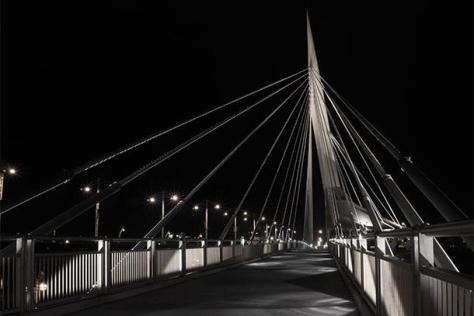Written by Sarah Watkins, Canadian Museum for Human Rights
Reposted with permission from the Canadian Museum for Human Rights blog, the institution’s online presence for stories about the museum and its exhibitions, programs, education programs, and other news. Check it out, and learn more about the exciting work happening at the CMHR. Original post by Sarah Watkins, September 3, 2016.
I have always believed that museums are powerful places. Visiting a well-done exhibit can help us to grow by opening our minds and hearts to ideas that we may never have even considered. For me, the travelling exhibition Sight Unseen: International Photography by Blind Artists is a perfect example of this.
On display at the Canadian Museum for Human Rights until September 18th, Sight Unseen showcased the photography of acclaimed international artists, all of whom have varying levels of vision loss. I was fortunate enough to work with some of these artists to create a lecture series called Shooting Blind, which explored the idea of taking photos without the use of sight. Now that I can reflect on this experience, I have come to realize that this exhibition and these artists have helped me to discover a new perspective on photography and ability.

What is really interesting about Sight Unseen is that the art seems familiar but foreign at the same time. In today’s world, everyone takes photos – at home with family, out with friends, on our cellphones and tablets and with our digital cameras. The act of taking photographs has become commonplace, and for this reason we can all connect with this exhibition. The artists in this show, however, aren’t just taking photos or documenting a moment in time; they are communicating a message. They think very deeply and consciously about what they are going to photograph.
I used to take thousands of photos with my digital camera in an attempt to capture the exact thing that I was seeing with my eyes. Now, because of this exhibition, I have a different perspective. I take fewer photos, but I think more deeply about each one. I look beyond what is in front of me and consider why I am taking the photo. Am I trying to capture an image of the bridge, or the way that the evening light creates patterns out of shadows that reflect the shape of their source? Is it the fog on the water that is most interesting, or the stillness that it communicates the minute before I jump in the lake for a morning swim?

After visiting Sight Unseen, I see the photographs in a new way. When I look at the photo created by Evgen Bavčar that shows an outstretched hand touching the face of a stone statue, I no longer see just the objects. Rather, I see the careful exploration and discovery of something unknown. I can’t help but think of the artist, exploring the world in ways that I could never imagine, through the sense of touch. Similarly, I used to think of the amazing light paintings created by Pete Eckert as abstract art. His photographs created in a completely dark room with flashlights and other light sources seemed random. Now, the swirling colours and rays of light make me think of energy. Each model is represented differently, the colours and patterns as unique as the person they are highlighting. To me, this sense of energy was something previously imperceptible until Pete showed it to me through his work.
This change in perspective has me questioning what it means to be “able” to do something. If photography isn’t about sight, then maybe dancing isn’t always about what we do with our legs, and speaking isn’t always about sounds coming out of our mouths. This is the lesson that I have learned from Sight Unseen. There is more about us that is the same than different, so no matter what our differences are, we all deserve to have our humanity, dignity and rights respected in the same way.
*Sarah Watkins is a Interpretive Program Developer for the Canadian Museum for Human Rights.
Header Image: Gerardo Nigenda, Entre lo invisible y lo tangible, llegando a la homeostasis emocional (Reaching Emotional Equilibrium Between the Invisible and the Tangible).

